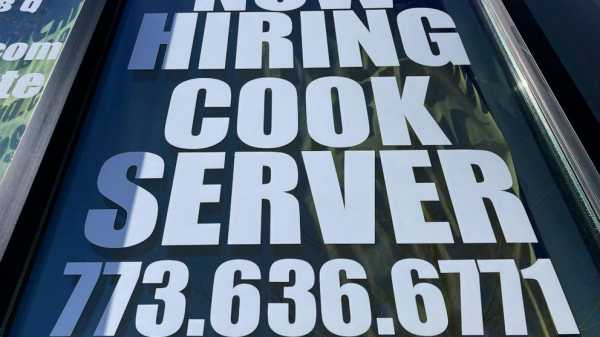
U.S. applications for jobless benefits rose to their highest level in more than a year, but remain at relatively low levels despite efforts by the Federal Reserve to cool the economy and job market in its battle against inflation.
Jobless claims in the U.S. for the week ending April 8 rose by 11,000 to 239,000 from the previous week, the Labor Department said Thursday. That's the most since January of 2022 when 251,000 people filed for unemployment benefits.
The four-week moving average of claims, which evens out some of the week-to-week fluctuations, rose by 2,250 to 240,000. That's the most since November of 2021.
Last week, the Labor Department unveiled revised estimates of the number of weekly applications for jobless benefits under a new formula it is using to reflect seasonal adjustments. The new formula, which led to an increase in its weekly tally, is intended to more accurately capture seasonal patterns in job losses.
Applications for unemployment benefits are broadly seen reflective of the number of layoffs in the U.S.
The job market seems to be finally showing some signs of softening, more than a year after the Federal Reserve began an aggressive campaign to cool inflation by raising its benchmark borrowing rate nine times in about a year.
America’s employers added a solid 236,000 jobs in March, suggesting that the economy remains on solid footing despite the nine interest rate hikes the Federal Reserve has imposed over the past year in its drive to tame inflation. The unemployment rate fell to 3.5%, just above the 53-year low of 3.4% set in January.
In its latest quarterly projections, the Fed predicts that the unemployment rate will rise to 4.5% by year’s end, a sizable increase historically associated with recessions.
Also last week, the Labor Department reported that U.S. job openings slipped to 9.9 million in February, the fewest since May 2021.
Some details from Friday’s Labor Department report raised the possibility that inflationary pressures might be easing and that the Fed might soon decide to pause its rate hikes. Average hourly wages were up 4.2% from 12 months earlier, down sharply from a 4.6% year-over-year increase in February.
Also Thursday, the government reported that wholesale prices fell sharply in March. One day earlier, the government said consumer prices rose just 0.1% from February to March, down from 0.4% from January to February and the smallest increase since December. However, prices are still rising fast enough to keep the Federal Reserve on track to raise interest rates at least once more, beginning in May.
Layoffs have been mounting in the technology sector, where many companies hired aggressively during the pandemic. IBM, Microsoft, Salesforce, Twitter and DoorDash have all announced layoffs in recent months. Amazon and Facebook have each announced two sets of job cuts since November.
About 1.81 million people were receiving jobless aid the week that ended April 1, a decrease of 13,000 from the week before. That number is close to pre-pandemic levels.
Sourse: abcnews.go.com






